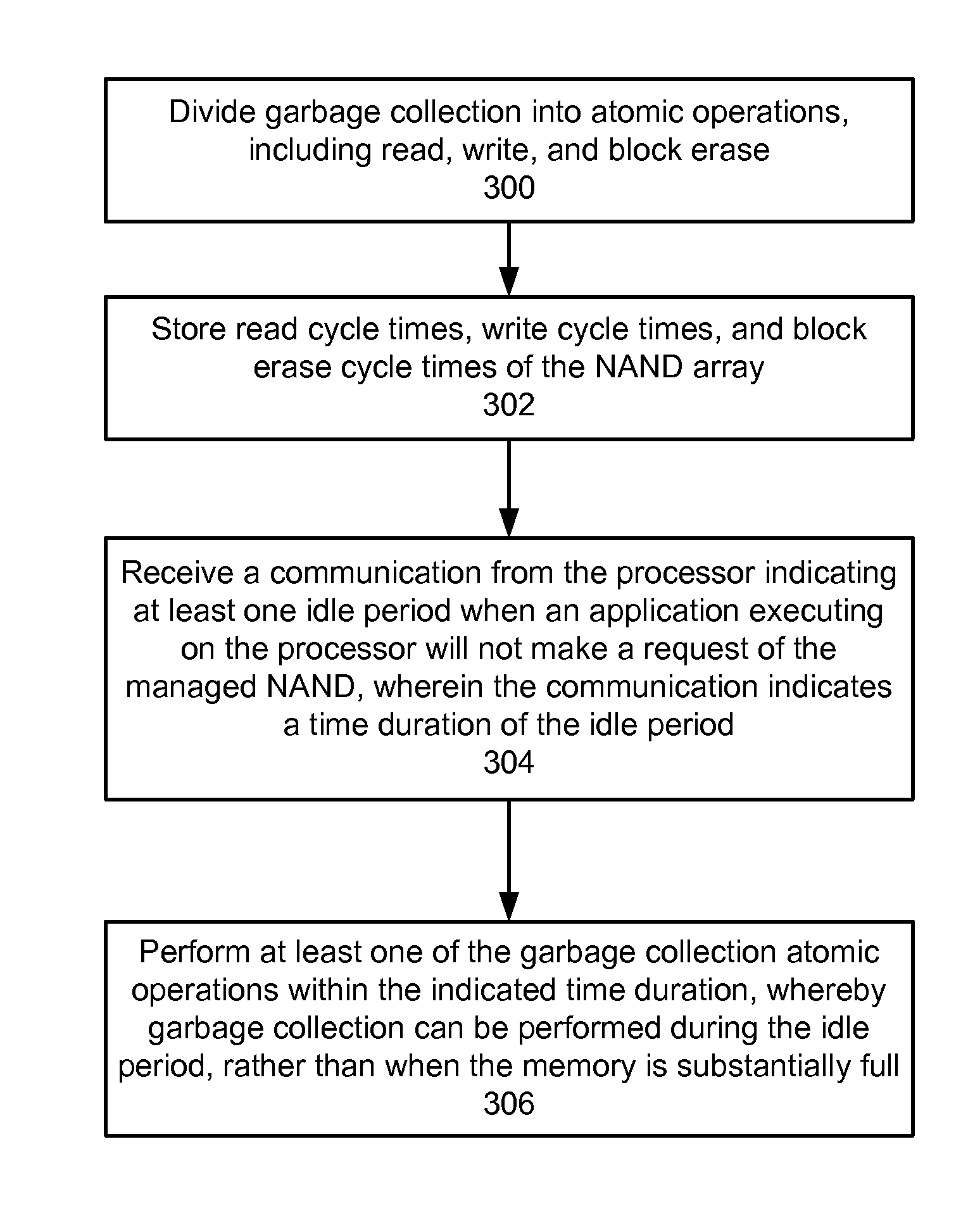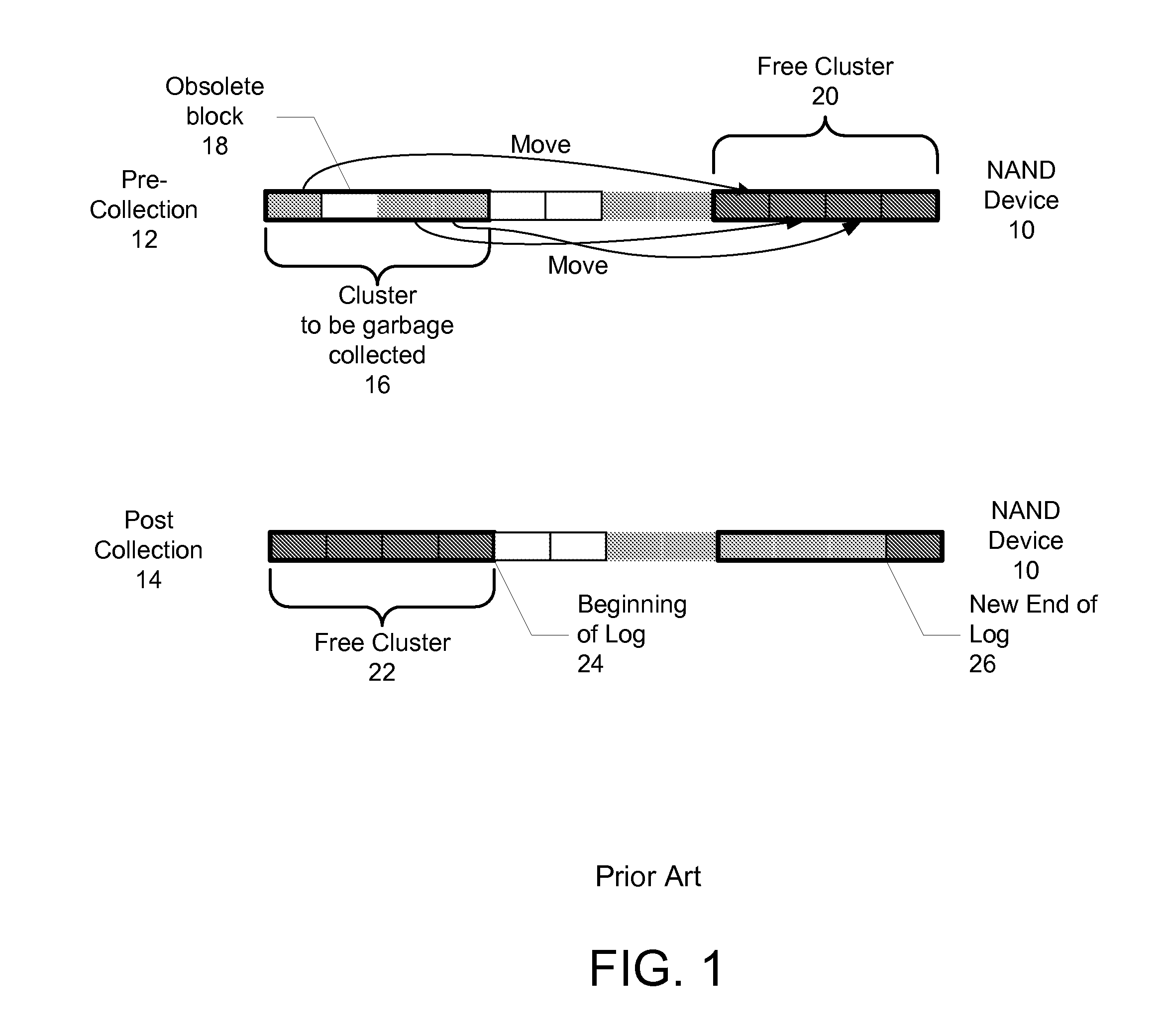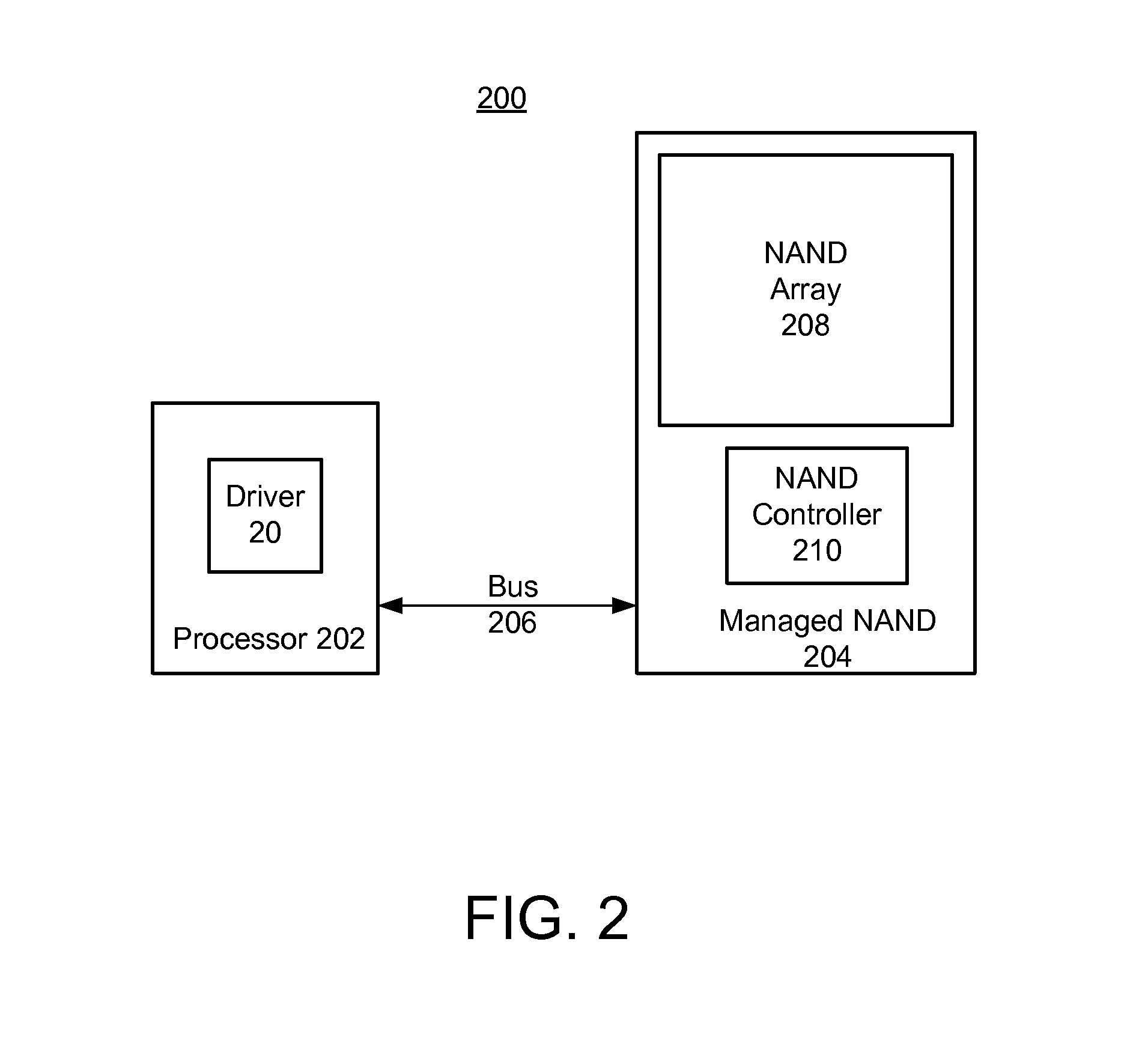Demand-driven opportunistic garbage collection in memory components
a technology of opportunistic garbage collection and memory components, applied in the direction of instruments, computing, electric digital data processing, etc., can solve the problems of multi-level nand cells, difficult management of nand devices, and inability to generally useful,
- Summary
- Abstract
- Description
- Claims
- Application Information
AI Technical Summary
Benefits of technology
Problems solved by technology
Method used
Image
Examples
Embodiment Construction
[0030]The present invention relates to demand-driven opportunistic garbage collection in memory components. The following description is presented to enable one of ordinary skill in the art to make and use the invention and is provided in the context of a patent application and its requirements. Various modifications to the preferred embodiments and the generic principles and features described herein will be readily apparent to those skilled in the art. Thus, the present invention is not intended to be limited to the embodiments shown, but is to be accorded the widest scope consistent with the principles and features described herein.
[0031]The preferred embodiment provides demand-driven opportunistic garbage collection in memory components, such as for managed NAND. The exemplary embodiments will be described in terms of managed NAND components. However, one with ordinary skill in the art will readily recognize that the exemplary embodiments may be used with any type of non-volatil...
PUM
 Login to View More
Login to View More Abstract
Description
Claims
Application Information
 Login to View More
Login to View More - R&D
- Intellectual Property
- Life Sciences
- Materials
- Tech Scout
- Unparalleled Data Quality
- Higher Quality Content
- 60% Fewer Hallucinations
Browse by: Latest US Patents, China's latest patents, Technical Efficacy Thesaurus, Application Domain, Technology Topic, Popular Technical Reports.
© 2025 PatSnap. All rights reserved.Legal|Privacy policy|Modern Slavery Act Transparency Statement|Sitemap|About US| Contact US: help@patsnap.com



